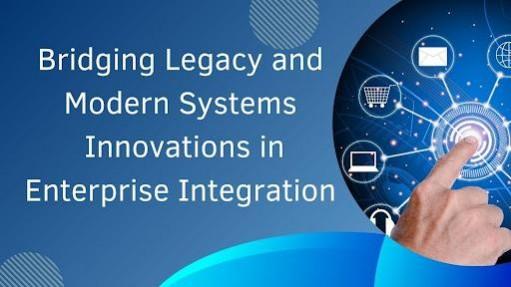
In this rapidly growing digital era, organizations face the challenge of integrating legacy systems with modern, scalable architectures. As businesses shift toward cloud-native solutions, the convergence of service-oriented architectures with microservices has emerged as a groundbreaking approach to enterprise integration. In his recent work, Nagireddy Vasipally explores the fusion of Oracle SOA Suite with microservices, offering insights into how enterprises can optimize their technological infrastructure while maintaining security and operational efficiency.
Revolutionizing Enterprise Integration
Traditional enterprise systems often struggle to keep pace with digital transformation's demands. Businesses require real-time data processing, seamless service orchestration, and enhanced security measures to support mission-critical operations. By integrating service-oriented architecture (SOA) with microservices, organizations can gradually modernize their systems without disrupting core functionalities. This hybrid approach ensures a smooth transition from monolithic frameworks to more flexible and scalable infrastructures.
The Power of Service-Oriented Architecture
SOA remains a crucial component of enterprise integration, providing a structured approach to system interoperability. By leveraging business process management, enterprise messaging services, and service orchestration, SOA facilitates the seamless exchange of information across various applications. Combined with microservices, it enhances agility and ensures that legacy systems continue operating efficiently alongside modern services.
Microservices: The Driving Force of Agility
Microservices architecture introduces a modular approach to software development, enabling enterprises to build and deploy independent services. This architecture reduces system complexity, enhances scalability, and simplifies maintenance. When integrated with SOA, microservices empower businesses to develop lightweight, high-performance services that align with evolving business needs.
Ensuring Robust Security and Compliance
Enterprise integration in the digital age demands stringent security measures to protect sensitive data and ensure regulatory compliance. A robust security framework that integrates authentication protocols like OAuth and WS-Security enhances data protection and prevents unauthorized access. Additionally, implementing regulatory standards such as PCI DSS and GDPR safeguards financial transactions and maintains customer trust.
Optimizing System Performance
Organizations must prioritize performance optimization for seamless enterprise integration by leveraging cutting-edge technologies. Real-time processing capabilities enable instant data handling, reducing latency and improving decision-making. Event-driven architectures enhance responsiveness by triggering automated workflows based on specific business events, ensuring streamlined operations. Efficient data synchronization strategies, such as incremental updates and distributed caching, maintain data consistency while minimizing resource consumption.
Additionally, monitoring tools provide proactive insights into system performance, allowing organizations to detect and address bottlenecks swiftly. Automated recovery mechanisms further enhance reliability by mitigating system failures and ensuring high availability. By integrating these elements, businesses can optimize transaction efficiency, reduce downtime, and deliver uninterrupted services, ultimately enhancing customer satisfaction and operational effectiveness in a competitive digital landscape.
The Future of Enterprise Integration
The evolution of enterprise integration strategies is increasingly shaped by artificial intelligence, blockchain, and cloud computing. AI enhances automation, decision-making, and predictive analytics, enabling seamless data flow across systems. Blockchain ensures secure, transparent transactions, fostering trust in decentralized environments. Cloud computing provides scalable, cost-effective solutions, reducing infrastructure complexity and improving accessibility.
Businesses that embrace modernization gain agility, efficiency, and improved service delivery, driving competitive advantage. Integrating legacy systems with advanced technologies remains a priority, ensuring continuity while leveraging innovation. API-driven architectures, microservices, and low-code platforms facilitate smoother transitions, reducing disruption. Organizations that proactively adopt these technologies will optimize operations, enhance customer experiences, and future-proof their IT ecosystems in an increasingly digital landscape.
In conclusion, Nagireddy Vasipally's research provides a comprehensive framework for enterprises seeking to bridge the gap between traditional SOA platforms and modern microservices architectures. By adopting a hybrid integration approach, businesses can enhance agility, strengthen security, and optimize performance, positioning themselves for long-term success in the digital age. As enterprise technology landscape continues to evolve, organizations prioritizing strategic integration will thrive in an increasingly interconnected world.














